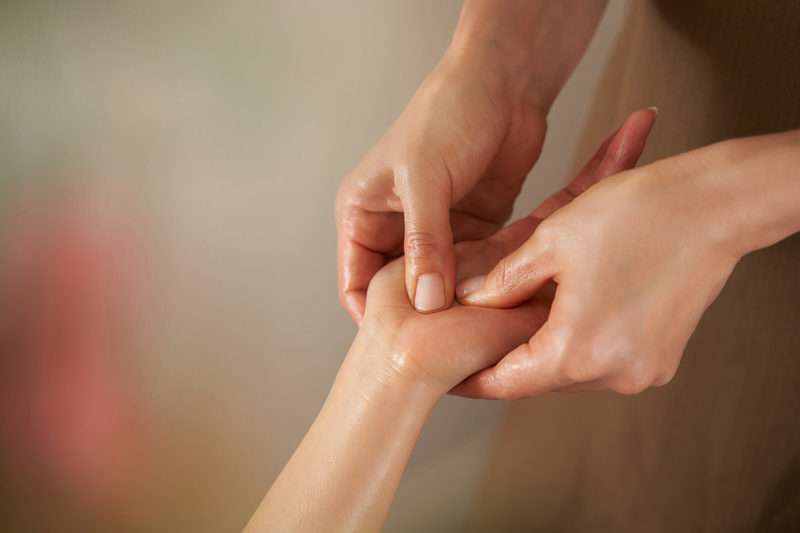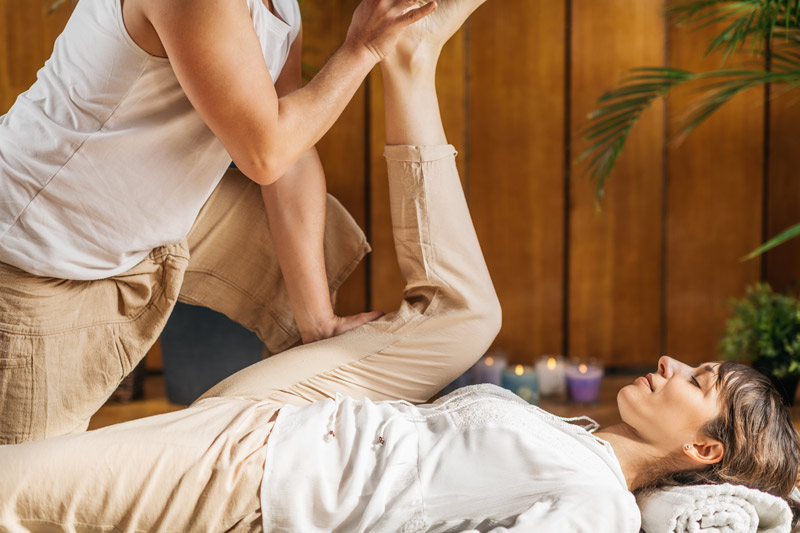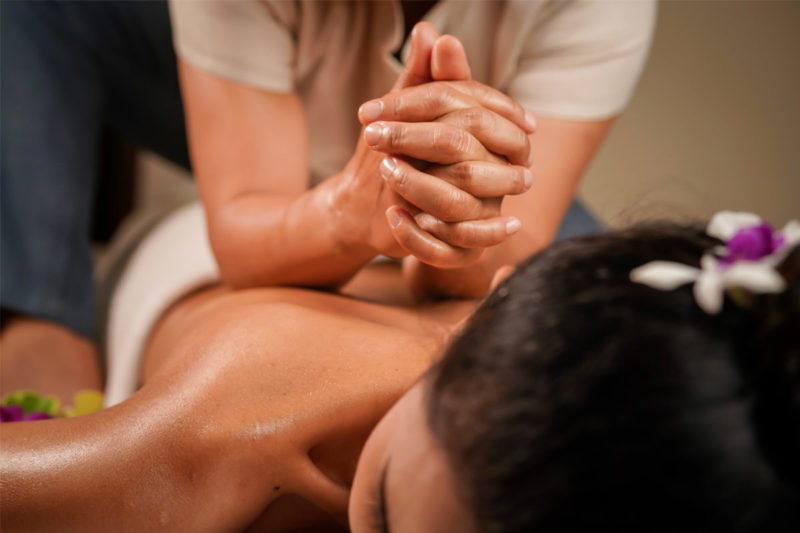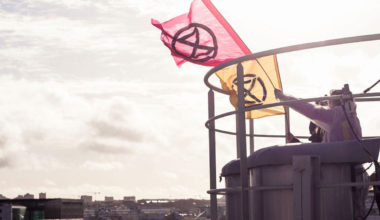There’s nothing more heavenly than a massage. But you still need to know which kind to opt for to suit your needs and wants… To reach Nirvana.
Beyond stress reduction and a feeling of wellbeing, scientific studies prove that massage causes real biochemical changes in the body that go right to the heart of our cells. This accounts for its anti-inflammatory effect, improvement of blood circulation and strengthening of the immune system. These days, massage, a manual technique that goes back more than 3,000 years, really seems like therapy through the fingertips. Provided that you put yourself in expert hands and opt for a suitable technique. To help you, let us walk you through the most famous and best-known types of massage from all over the world.
Shiatsu massage

This is a Japanese manual technique that uses finger pressure on the body’s reflexology points. Based on the principles of Chinese medicine, it rests on a vision of the body as a whole, which is defined by the meridians through which life energy flows.
This kind of massage is a preventative treatment to stay in good health. It particularly targets the nervous system, which it rebalances, thus rehabilitating the body’s whole energetic and mental system. It delivers immediate stress-busting results, relieves pain, helps you sleep better, relieves muscle tension and upset stomachs. For those wanting to repair their body, rebalance it and recover new energy.
Swedish massage
Swedish massage originated from the work of a Swedish doctor, Per Henrink, who was first known for his famous Swedish gymnastics, taught in the early 19th century at his school in Stockholm. It was thanks to his son that his massage technique was disseminated all over the world in 1900. Swedish massage is based on anatomical and physiological knowledge of the body, age-old Nordic gymnastics, fencing and age-old massage techniques. While these days, this type of massage still draws inspiration from the initial motions, it allows the therapist a degree of their own input. This explains why it varies from practitioner to practitioner.
Swedish massage is practised to reduce muscle tension and free up the joints through various manoeuvres (light strokes, friction, kneading, etc.). As the emblematic massage of sporty types, it allows them to recover faster by relieving tired muscles, mostly by stimulating blood and lymph circulation, which expunges the toxins secreted during exertion. It is most often practised with essential oils to optimise athletes’ recovery.
Californian massage

Having first appeared in the 1970s in California, it was developed by Margaret Elke to give her patients some really restful time out and complete relaxation of the body and mind. Californian massage owes its success to its many benefits, mainly rest and relaxation. The slow, flowing motions are enveloping and gentle. They put you into a state of deep relaxation, where you can totally let go, to the point that you actually fall asleep during the session. It is done on a completely naked body, with oils. The manoeuvres are done on all parts of the body and start with the back and nape of the neck. The therapist, who treats the whole body, will focus on the most tensed-up areas to release tension. The ability to let loose accounts for the slowing of breathing and of the heartbeat. This is the perfect technique for stressed, anxious or depressed people, insomniacs and all those who suffer from back pain or who are seeking physical and mental wellbeing.
Thai massage

This type of massage first appeared in Thailand, when Indian Buddhist doctors and monks arrived in the country over 2,500 years ago. This holistic technique was passed on verbally over the centuries within families and in Buddhist temples. It was also greatly influenced by traditional Chinese and Ayurvedic medicine, as well as yoga and meditation.
The origins of this type of massage account for the three stages in its execution. Exercises inspired by yoga poses between the therapist and their patient are done in succession at a flowing but fast pace to limber up and loosen the body. Then, an energising sequence is carried out, with massages and pressure applied to very precise areas (corresponding to the meridians, the body’s energy lines). Depending on the area, the masseur uses their palms, fingers, arms and even feet. The session ends with a meditation phase. This technique of stretching and pressure applied in conjunction with breath work releases muscle tension and energy blockages to restore flexibility and harmony to the body. The state of relaxation also calms the mind.
Balinese massage
As you might expect, it originated in Bali, Indonesia. It’s a clever mix of different techniques from Indian, Indonesian and Chinese massage, along with some principles of Ayurvedic medicine which account for its relaxing and also therapeutic properties. It is based on the three elements – air, water and fire – which are associated with the nervous, digestive and hormonal systems.
Balinese massage is deep-tissue and complete, and performed with jasmine, sandalwood or ylang-ylang essential oil. It is both relaxing and energising, powerful and invigorating, to recover welcome, powerful energy. The therapist massages the whole body and starts off with kneading, light strokes and friction, with the thumbs, palms and forearms. The manoeuvres are gentle and stimulate the body’s main energy points. They improve blood and lymph circulation to expunge toxins. This is the reason why it revitalises the body, relaxes the muscles and the mind. Balinese massage works particularly with the hormonal and digestif systems to rebalance them. It is recommended in case of insomnia, headaches or joint pain, especially lower back pain. Due to the depth of the pressure applied, it is excellent for healing sports injuries.







